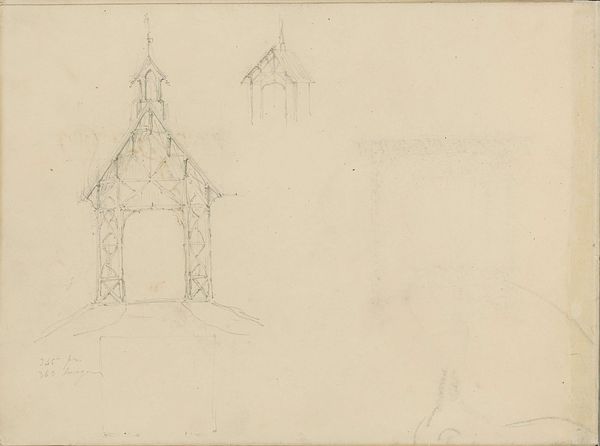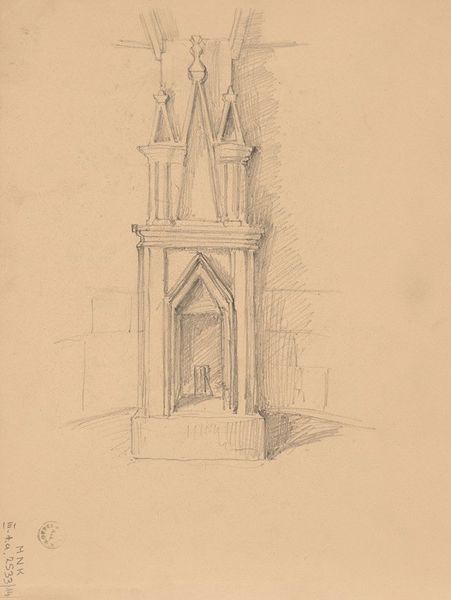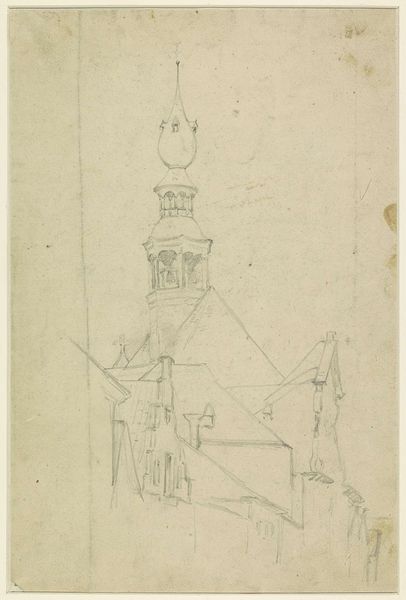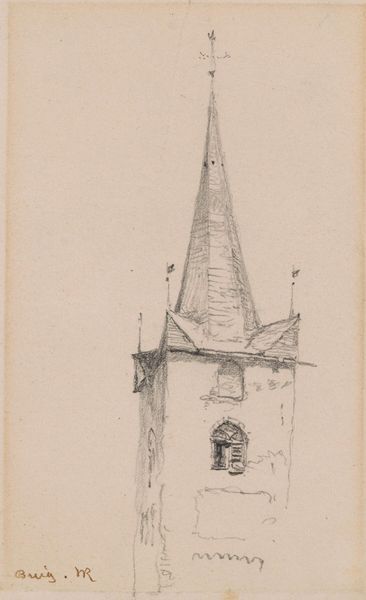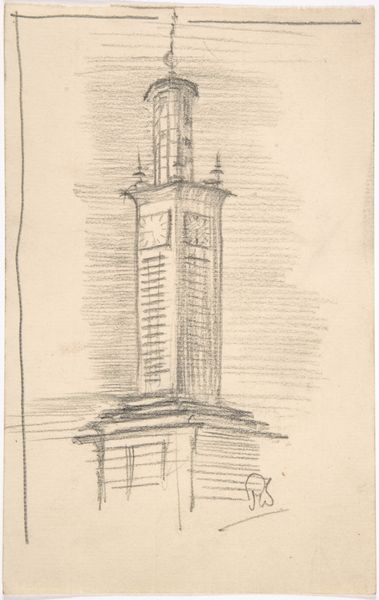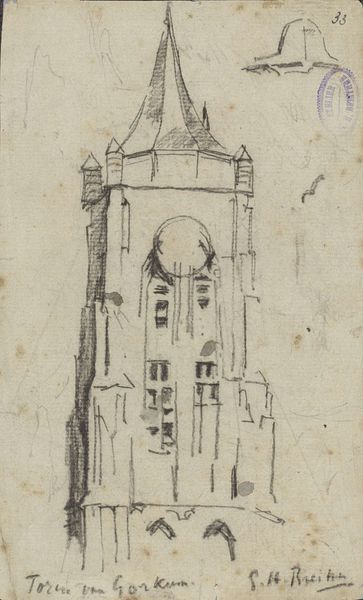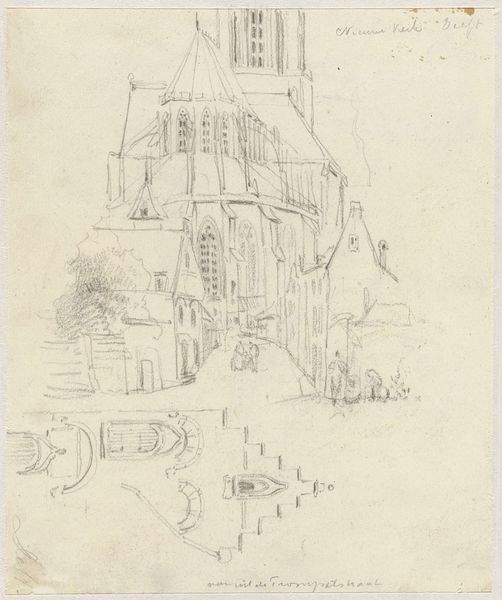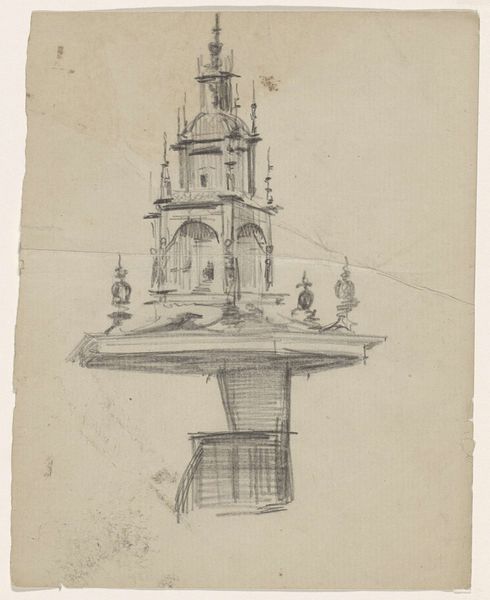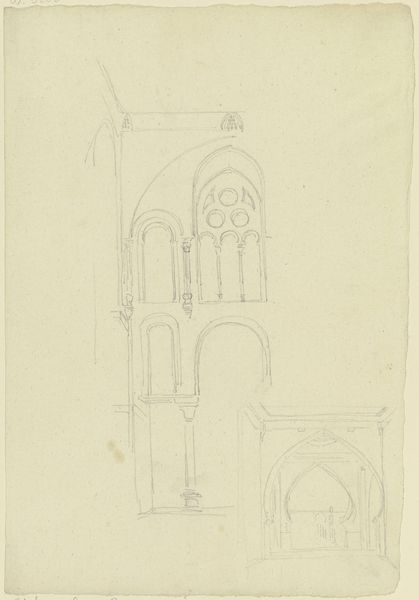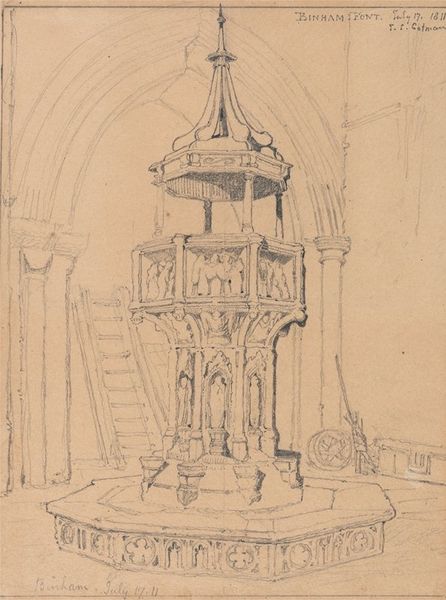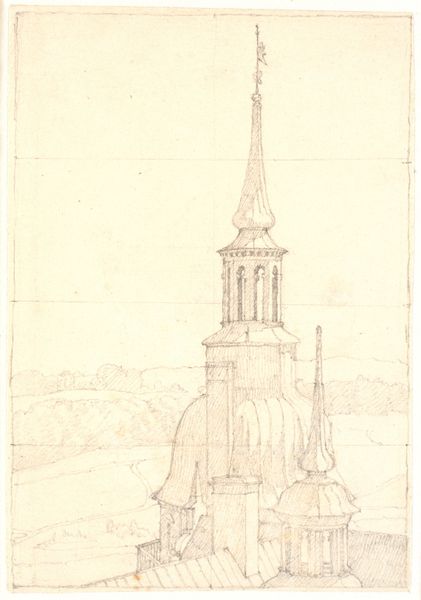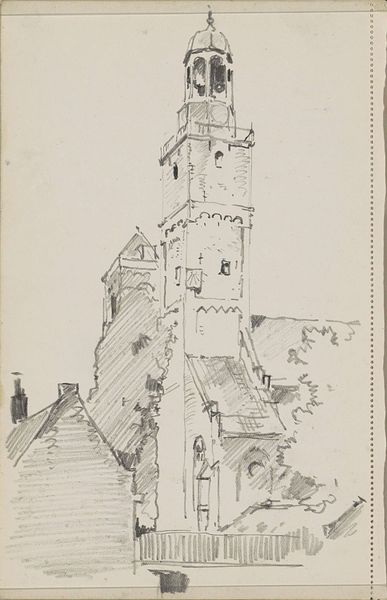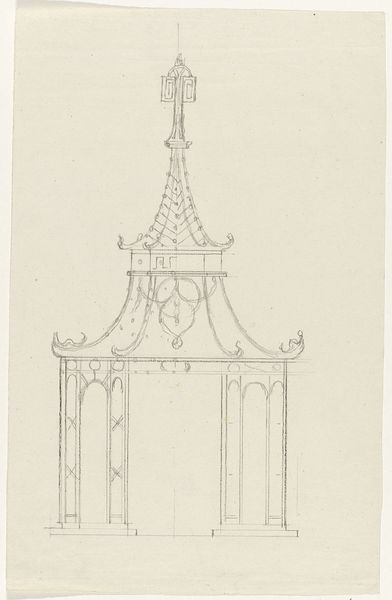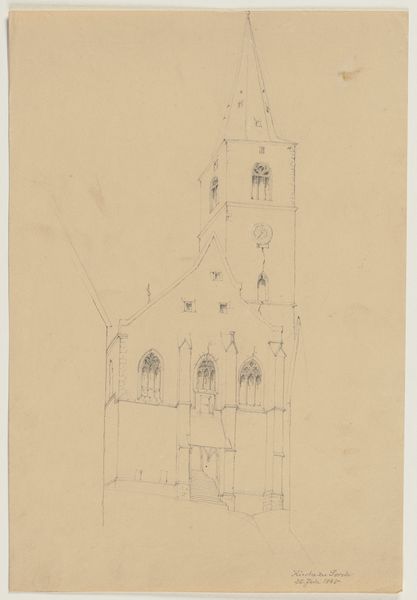
drawing, pencil
#
architectural sketch
#
drawing
#
aged paper
#
quirky sketch
#
dutch-golden-age
#
sketch book
#
landscape
#
personal sketchbook
#
idea generation sketch
#
sketchwork
#
pencil
#
sketchbook drawing
#
storyboard and sketchbook work
#
sketchbook art
#
building
Dimensions: height 196 mm, width 117 mm
Copyright: Rijks Museum: Open Domain
Curator: Here we have George Hendrik Breitner’s pencil drawing, “Torenspits van de Oostpoort te Delft,” or "Spire of the East Gate in Delft," from 1884, now held here at the Rijksmuseum. Editor: Immediately, I’m drawn to the fragility of it, the light touch. It feels like a whisper of a building, an echo more than a declaration. And I love how much empty space Breitner leaves, as if daring the void to speak. Curator: Absolutely. These types of sketches from Breitner provide insight into his working methods. This wasn't a commission or a finished piece intended for display; it was part of a personal sketchbook, an idea generation space. You see this capturing of the Dutch cityscape—here, the distinctive Oostpoort—reduced to its essential form. Editor: Exactly. It’s pure essence! The aged paper lends this ghostliness as well. You can almost smell the damp canals, the passing years, like old stories fading. Is that another building, maybe, suggested at the top left? Curator: Precisely. Breitner doesn't offer us a complete picture, which pushes against expectations of traditional architectural drawing, instead we get suggestions, implying a broader, lived-in environment. His sketches often record slices of ordinary life in Amsterdam and other Dutch cities, as reference points for his later, larger paintings. The East Gate itself, which remains standing today, has such deep civic symbolism, acting as the main easterly entry to Delft. Editor: So this sketch embodies that historical weight while simultaneously being wonderfully light-hearted and free! Did the Delft city council ever imagine their grand gate turning up as a quick notation in someone’s notebook? There’s something rebelliously democratic about it. Curator: I hadn’t thought of it quite like that, but there is a beautiful tension, perhaps intentional, that emerges in understanding how sketches like this become foundational for establishing one's perspective of place, as well as their wider impact on artistic practices through documentation. Editor: Agreed. I leave now seeing not just a sketch of a building, but a captured feeling, a preserved fragment of a fleeting thought, a silent witness to the passing time—and it resonates. Curator: Indeed. It serves as a reminder that often it's the briefest, most personal moments of artistic process that reveal the deepest connections between the artist, the world, and us, the viewers.
Comments
No comments
Be the first to comment and join the conversation on the ultimate creative platform.
